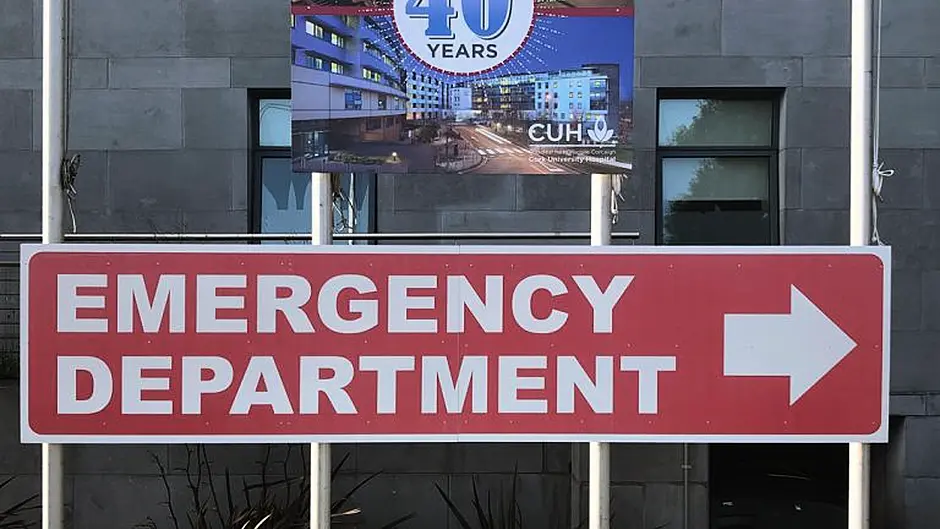It's not until you experience, at first hand, the conditions and the pressures in an A&E, that you can begin to understand why so many elderly people are fearful of ending up there, writes Brian Moore
WE’VE all listened to the radio reports and read the headlines telling us that there is a major crisis for patients and staff at A&Es across the country.
We read about the hundreds of sick, injured and frightened elderly people who were recorded by the Health Safe Executive (HSE) lying on trolleys for a minimum of 48 hours at the A&E at Cork University Hospital (CUH) over the last three months, or of the doctors, nurses and staff who are pushed to their limits trying to care for their patients.
And of course we hear of the government’s promises to tackle another major crisis in our health service, another scandal, that can only be described as a ‘national disgrace’.
However, it’s not until you experience, first hand, the conditions and the pressures of attending an A&E that you can begin to understand what elderly people face if they are rushed to hospital, and why so many of them are fearful of ending up there.
My father (78), had a fall, a bad fall, last week.
He felt faint while out at his local supermarket, fell backwards and hit his head, splitting it open.
My Dad is, like a lot of elderly people, on a blood thinner to prevent clots, so you can imagine, I’m sure, the amount of blood that he lost as he lay there on the supermarket floor.
The manager and the staff rushed to help my father and called an ambulance. I was at work in The Southern Star when I got the call, and left immediately. My father and mother live in Cork city so I made my way to the CUH A&E department, where I was told the ambulance was taking him.
When I arrived my father was still on the ambulance trolley, just inside the emergency arrival door, with his head bandaged, looking pale and frightened.
He was joined by four other patients, all on ambulance trolleys, alongside their ambulance personnel, waiting to be taken into the main A&E area.
Ambulance crews must wait with their patient until they brief the A&E staff as to their condition. They cannot leave for their next call until this procedure is completed, so not only were there four patients waiting to be admitted to the A&E, but there were now four empty ambulances, that could have been helping other patients, sitting outside.
My father was admitted to the A&E, transferred to a trolley and rolled into a corridor, where the doctors and nurses began their work.
And here he stayed while he was examined and questioned about his medical history. All the while other patients were being rolled by on trolleys. Worried family members, including myself, shuffled in and out of their path, for the next 24hours, trying not to get in the way, but wanting to be near our loved ones.
Dad couldn’t sleep of course. The noise, the people constantly moving about, and the bright lights, which are never turned off, made sure of that. And when you are on a narrow trolley, designed really just to allow staff to move patients from one procedure to a bed and back again, sleep is not something that comes easily.
I went home to get my father some necessities and when I returned I found that his spot in the corridor had been filled by another patient. I assumed that he had been moved to a ward and into a bed.
I was wrong. Dad had been moved to another corridor and was now in the process of getting a blood transfusion.
And here, in his new corridor, he stayed for another 24 hours.
I asked a nurse if she had any idea how long it would be before my father was transferred to a ward and onto a bed. The nurse, who looked impossibly young, over-worked and very stressed, said that she had no idea and that there were ‘48 other patients looking for a bed as well’.
Some time later my father was moved to the Acute Medical Observation Unit, still on his trolley where he stayed until – finally – he got a bed and was transferred to a ward. It was now 53 hours since he had arrived at CUH.
The care he received from the doctors, nurses and staff was, and continues to be, excellent and I have to thank them heartily for looking after my father.
But the stress they are working under is more than clear to those of us who have witnessed the conditions first-hand at the hospital.
These conditions and the associated stress of working in an overcrowded A&E is a major concern for Stephen McMahon, co-founder of the Irish Patients’ Association, an organisation that advocates for the needs of patients in hospitals across the country.
‘Overcrowding in emergency departments (ED) leads to mistakes and, according to some experts, leads to preventable deaths and injury to patients, because overworked staff are prone to making mistakes,’ he says. ‘They are, after all, human. At best it is undignified treatment for some patients,’ Stephen said.
‘Overcrowding causes backlogs for patients who have been waiting for years to get hip replacements, and a host of other surgeries, because their bed is occupied by a patient from the ED,’ he added.
‘The system must be truthful with the patients and communities that are being affected.’
A&Es now in crisis all year ‘round
BY SIOBHÁN CRONIN
CUH issued a statement last week (August 7th) urging the public to explore all other avenues before going to A&E, such was the level of delay being experienced, it said.
It was identical in its wording to a statement issued, also through a PR firm, on August 1st.
The statement read: ‘Cork University Hospital (CUH) has been exceptionally busy in recent weeks. Due to this increased level of activity and subsequent admissions, it is regrettable that some patients may experience a delay in the ED [emergency department].’
The statement added that the increase in attendance was due to ‘the large number of very ill medical patients requiring admission’.
It continued, in both statements: ‘Patient care is paramount in CUH and this situation is being treated as a priority by hospital management who have taken steps to address this issue. Hospital management have requested that, where appropriate, the public contact their GP in the first instance and explore all other options available to them prior to attending the Emergency Department if their needs are not urgent.’
In both instances, it recommends that patients first go to their GP or SouthDoc, or attend the urgent care centre in Gurranabraher (open 8am to 6pm), or the local injuries unit at Bantry (open 8am to 7.30pm) or the injuries unit at Mallow hospital (open 8am to 7pm).
But in a telling comment on the overall national situation, the August 1st statement erroneously added at the end: ‘Issued on behalf of University Hospital Waterford by Heneghan PR.’
While these statements used to be issued mostly in the high-pressure winter months, they are now common throughout the year.








